Every year when November rolls around the excitement at Tourspecgolf builds for the announcement of the new Yamaha lineup for the upcoming year. It has turned into big event annually where many of our top customers and in the know golf enthusiasts queue up for the chance to pre order the new models. As we all know here the Limited Edition Tour Model irons are always the first to sell out typically even before launch. This year Yamaha kept the new models under a tight wrap, amazingly with no leaks as to what they even looked like. Last month when the models were finally revealed many were surprised to find this years V Forged Tour Model was now a blade and this years standard V Forged model was now a… wait what is it exactly?
I’m reviewing the standard V Forged first as Yamaha has decided this year to not offer demos of the Tour Models since they are limited editions. Because of that we need to wait for our actual orders to come in so that we can review the Tour Model. In early November when Yamaha released pictures of the new V Forged, many people did indeed say “what is it exactly?” The V Forged has always been a superb all around, close to mid sized cavity back, aimed at the improving golfer and better player. The key is that is has always obviously been a cavity back. The new V Forged is quite a departure visually and design wise from all previous generations of the V Forged, and Yamaha does indeed refer to it as a cavity back.
At first glance though, if anyone decides to call the V Forged a blade or muscle back, there probably aren’t many who would disagree. Yamaha touts the V Forged as an aggressive cavity back or half cavity back model which we agree with. It has the lower portion of a cavity back which brings the center of gravity lower towards the sole yet the middle and top portion of the V Forged are very blade like. This top portion has a similar thickness to provide a consistent feel across the face.
While the V Forged is touted as an aggressive cavity, it still retains the larger size of previous V Forged models. So if we are to consider this to be blade like, it does tread away from being a muscle back with its longer heel to toe length and wider sole. The toe is still high and reasonably squared off and the heel side of the face has actually been lowered to provide a sharper image. The leading edge is slightly rounded to help out with some ease of use especially in softer turf like we find here in Japan.
Yamaha first used face milling on last years models and its back again this year though slightly tweaked in its pattern. The score lines now feature a 3mm pitch interval and together with the face milling are said to increase the amount of spin and control. Yamaha irons which are forged from S20C at Endo have always had a great feel to them and with these new grooves and face milling, the impact feel seems enhanced ever so slightly, almost like a softer compression of the face perhaps from the additional bite.
As with previous V Forged models, the sole is mid sized and and grinded to provide versatility and extra help for those who desire a clean entry and exit from various conditions. The grind helps the iron get under the ball consistently which helps result in great feel at impact. Its colder now and the ground is harder and the V Forged had no problems interacting with the turf and taking a nice clean divot along with very nice impact.
Along with being larger than the Tour Model, the V Forged also has obvious offset. Its not terrible but very noticeable and for some a possible turn off. Otherwise it frames the ball quite well. The longer face makes for a wide hitting area and the top line is straight and reasonably thin. The V Forged is workable to an extent with easy draws and fades at command. Controlling trajectory is a bit harder as the weight is all quite low which makes for a slightly higher launch and good stopping power thanks to above average spin.
Past generations of the V Forged have always been one of the most popular choices for improving players to even low handicappers thanks to their superb all around performance. The new model has retained all these characteristics, ease of use, above average distance (lofts are also strong), accuracy and control, and feel, even with radically changed visuals. I feel the new design has in fact improved the feel which is fantastic in this iron. In previous models the cavity got so low and perimeter weighted that it may have lost some of its pure feel. With the half cavity design or almost muscle like lower back, a more pure and soft but not mushy feel is evident, the kind that feels great but still give you enough feedback to know where the ball compressed on the face. While it is thickest in the middle, that lower muscle spans towards the toe and heel minimizing harsh feel on toe miss hits. Center strikes and those towards the toe feel very good and are rewarded with a strong trajectory and pretty much straight ball flight right at the pin.
The Yamaha’s are available with DG S200 and NS Pro 950GH and this year Modus3 is a no charge upgrade. The standard graphite shaft is the proven Graphite Design Tour AD 75 in a BB Blue color this year. Yamaha also offers a variety of upgrade shafts directly from the factory. You can check out the new Yamaha V Forged here in the pro shop!

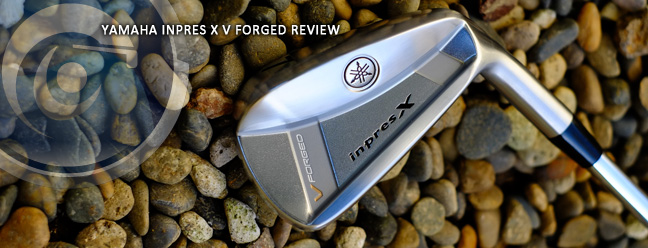

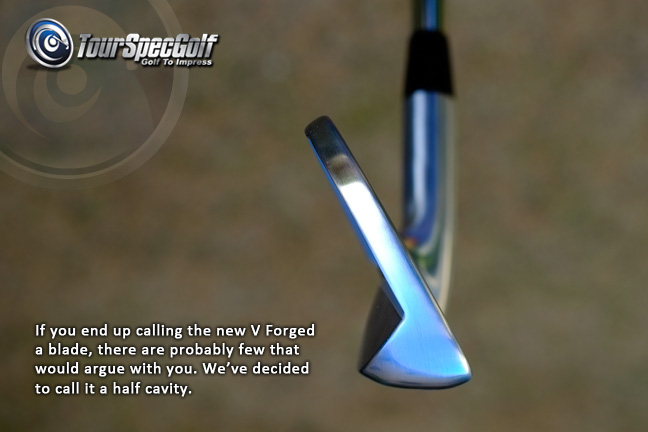
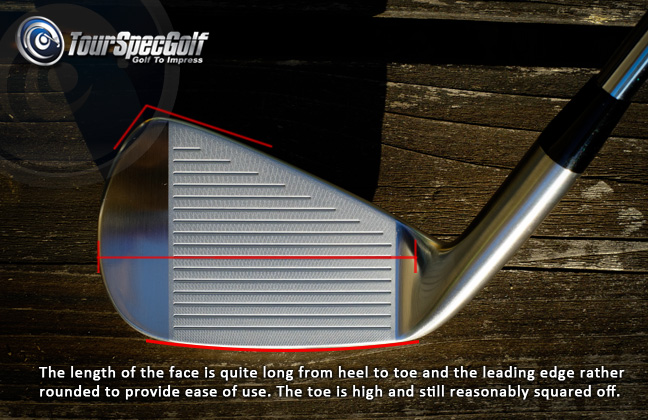
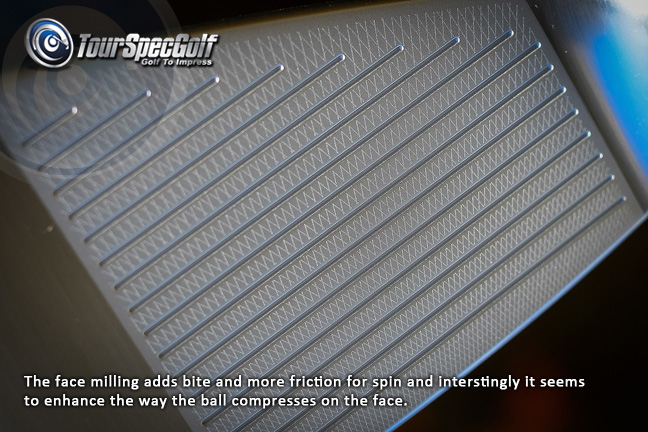
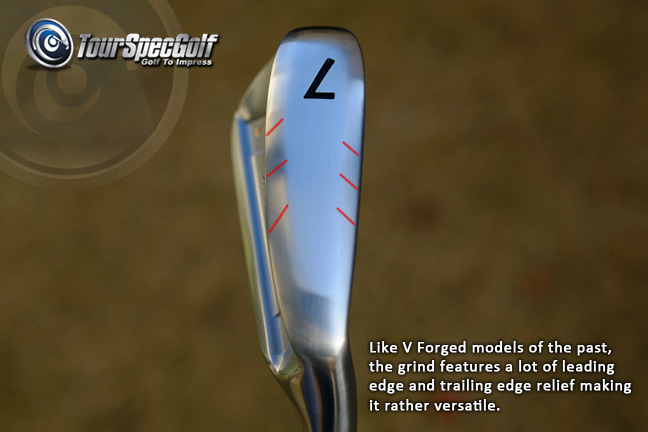
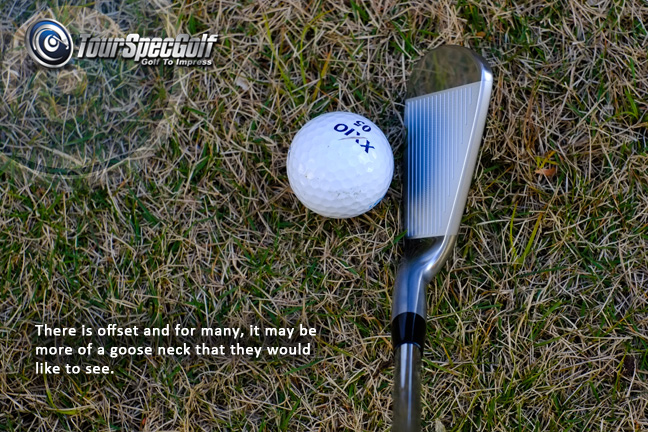
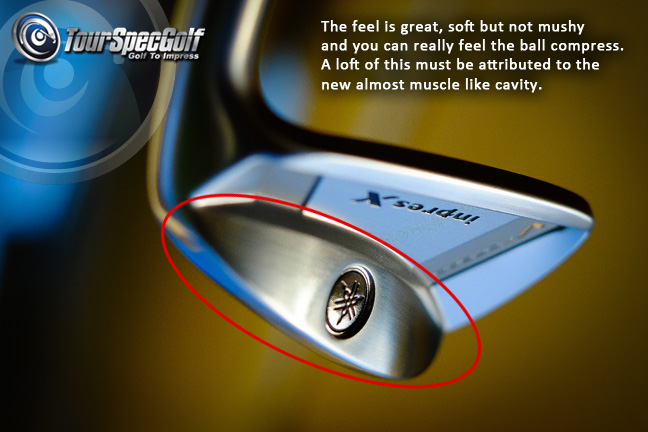
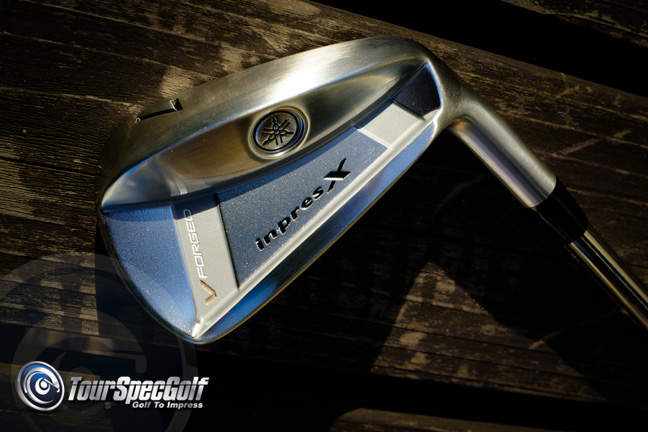

I’d kill for the Tour version.
Gocchin, so for somebody who have the 2012 model, do you think this new iron demands an upgrade? I don’t see any big improvement than the pretty face and slightly better feeling (because of less cavity)? But as always, your opinion is highly valued! Thanks.
It is a different design with a bit more workability but If you have the 2012 and are happy with distance and performance there is probably no need to upgrade.
Gocchin,
How would you compare this iron set with Onoff Forged 2013?
Many thanks.
Previous generations of the Yamaha V Forged and ONOFF forged have always been very comparable. They target a similar audience, are not that different in size and are both Endo forged S20C. The ONOFF I would say is a tad more forgiving due to the weighting and tungsten sole. The ONOFF probably has a higher trajectory and may feel a tad softer as it is always very soft.
Im looking for a forgiving blade type iron with a penetrating trajectory,not much to ask for lol. How would these compare to the Crazy Air r romaro neo blade. Im currently gaming the Yonex ezone but need a tad more distance control. Im even considering the new taylormade rocketball tour as most of there pros have ditched there mbs for these. I play with the nippon modus 3TX but still need a slightly flatter traj,so any advice on shafts to would be appreciated to combine with a neo blade type head. Many thanks and much appreciated cheers,
Ben
Where could I get the Yamaha Iron set V-Forged 2013 with Graphite shafts, in Jakarta-Indonesia? There is available in stores but steel shaft model. and what is the price for the set with Tour AD 75 Graph shaft? thanks you.
Sugi
I just recently bought this V-Forged TourAD 75 flex R. I also have RomaRo Ray-H with Bassara UL Iron50 flex R and Epon 701 also with Bassara UL Iron50 flex R. I have to say that this VForged is pair in heaven with TourAD 75.
7 iron test: Yamaha V Forged 155meters dead straight backspin about 1 meter. Feel nicely soft but springy and very tight, thanks to TourAD shaft. Effortless. Epon701 155 meters a bit draw backspin about 50cm. Feel soft and springy (i guess they are forged at the same factory, ENDO in Thailand, and same DNA, the SC20). Epon701 feel a lot heavier of the head. RomaRo 150meters dead straight backspin about 50cm. You can feel the steel impact and don’t feel the springiness like the other two. Ball flight Yamaha and Epon are almost similar, RomaRo Ray-H lower.